INTRODUCTION
METHODS
Subjects
Image acquisition
Image analysis
Qualitative analysis
Quantitative analysis
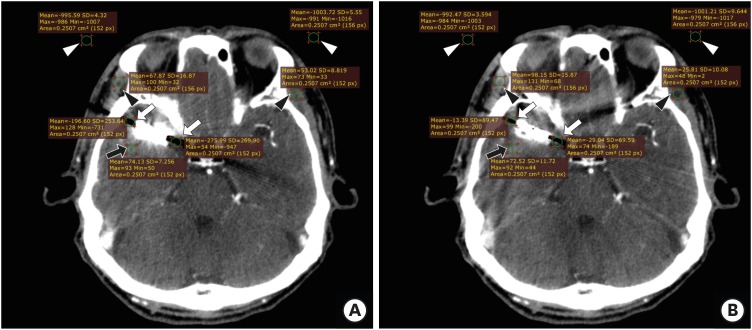 | Fig. 1Locations of the ROIs used for image analysis. Circular ROIs approximately 25 mm2 in size were placed on (A) non-O-MAR images and on (B) O-MAR images at the following areas: immediate vicinity of the clip or coil mass (white arrows), adjacent brain parenchyma (black arrows), bilateral temporalis muscle (black arrowheads), and the air outside the cranium at the level of the metallic implant (white arrowheads).
ROIs = regions of interest, O-MAR = metal artifact reduction for orthopedic implants.
|
Statistical analysis
Ethics statement
RESULTS
Subject characteristics
Qualitative analysis
Table 1
Comparison between qualitative variables of O-MAR and non-O-MAR images

 | Fig. 2Streak artifact improvement in clips and coils using O-MAR. The streak artifact improvement was significantly more evident in clips compared to coils (P = 0.002).
O-MAR = metal artifact reduction for orthopedic implants.
|
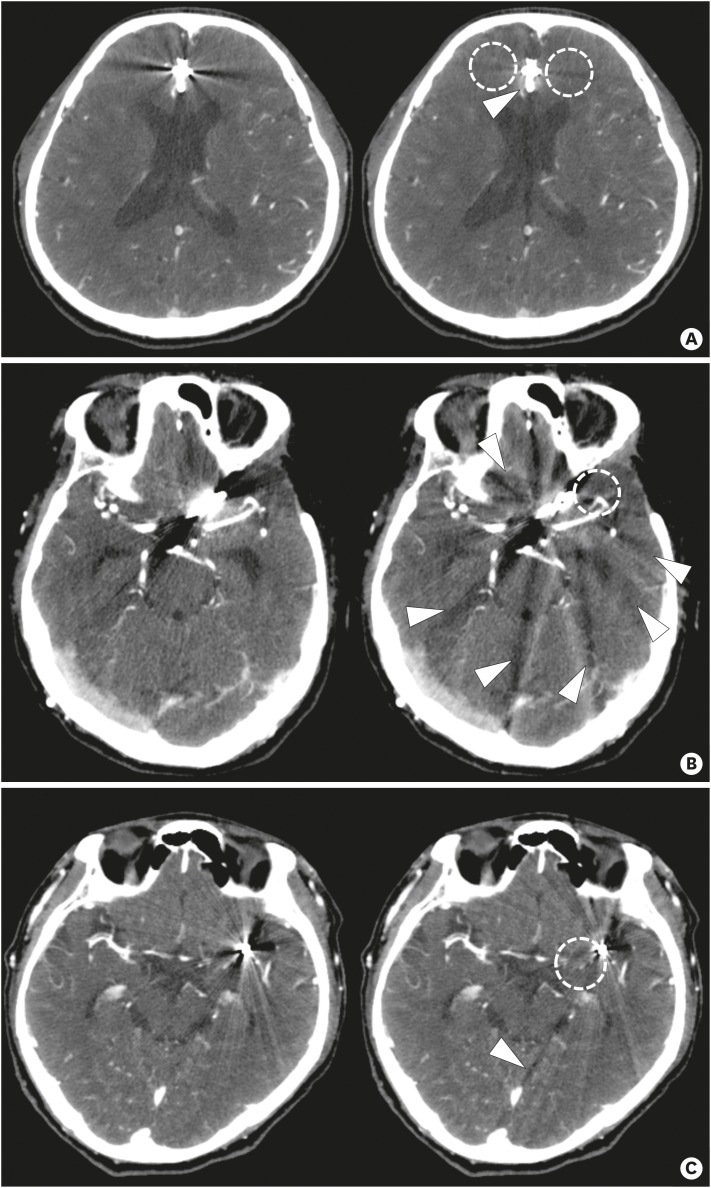 | Fig. 3Non-O-MAR (left) and O-MAR (right) images in the representative cases. (A) A surgical clip at right A2/3 junction in a 71-year-old male patient. The O-MAR image shows improved streak artifact (dashed circles), although a vessel is slightly less clearly depicted (arrowhead). (B) A 68-year-old male patient who underwent surgical clipping for an anterior communicating artery aneurysm. The O-MAR image shows multiple bands of worsened streak artifacts (arrowheads), while there is a focal area with improved streak artifacts (dashed circle). (C) A 73-year-old male patient who underwent coil embolization for an aneurysm at the left middle cerebral artery bifurcation. The streak artifacts are slightly improved on the O-MAR image (particularly in the dashed circle area), but there is a focal aggravation of streak artifact (arrowhead).
O-MAR = metal artifact reduction for orthopedic implants.
|
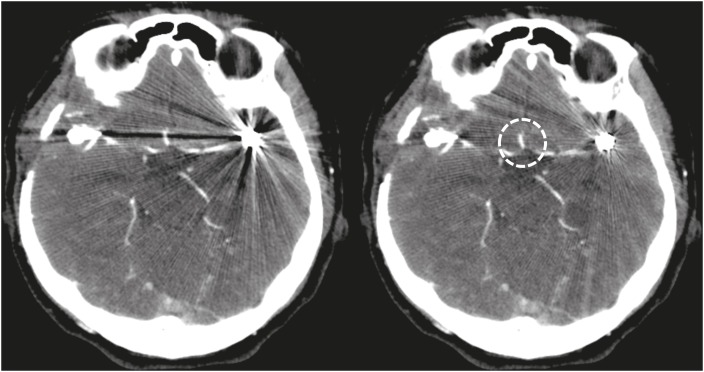 | Fig. 4Non-O-MAR (left) and O-MAR (right) images of a 48-year-old female patient who underwent coil embolization and surgical clipping. The clip at the right middle cerebral artery bifurcation and the coil mass at the left middle cerebral artery bifurcation are present on the same axial image. The streak artifact is markedly improved on the O-MAR image. In addition, a branch of the anterior cerebral artery is more clearly depicted using the O-MAR (dashed circle).
O-MAR = metal artifact reduction for orthopedic implants.
|
Table 2
Effect of coexistent metallic implants on the same axial plane

| Grade of new streak artifact | No coexistent objects (n = 15) | Two or more coexistent objects (n = 21) | Total (n = 36) |
|---|---|---|---|
| Grade 1 | 7 | 2 | 9 |
| Grade 2 | 7 | 11 | 18 |
| Grade 3 | 1 | 8 | 9 |
Quantitative analysis
Table 3
Comparison of the quantitative variables in O-MAR and non-O-MAR images
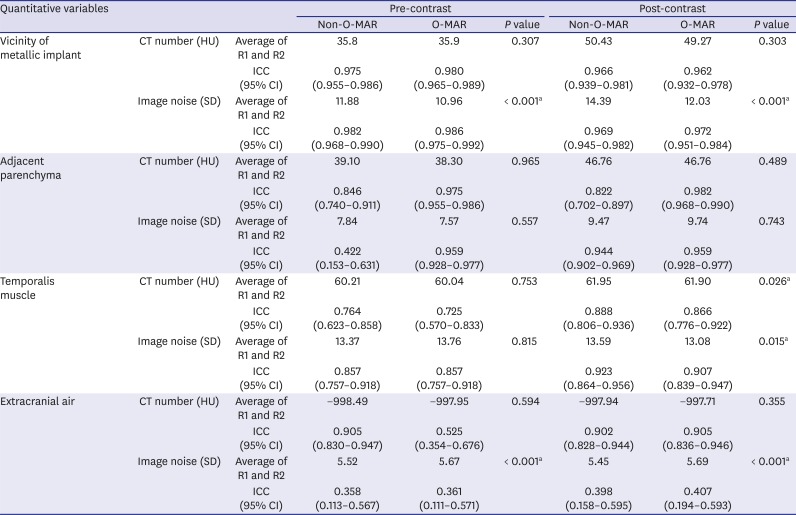




 PDF
PDF Citation
Citation Print
Print



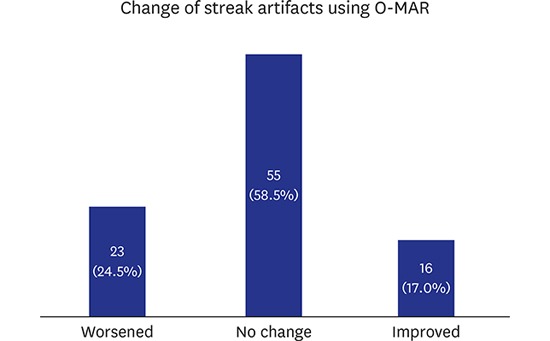
 XML Download
XML Download